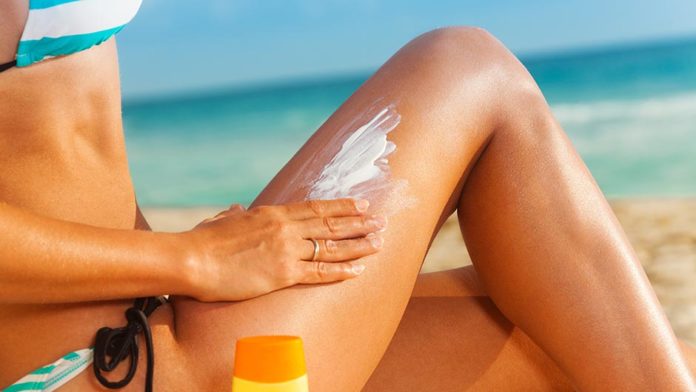Summers are notoriously getting hotter and it is time we get cautious about our skin. Thanks to the unhealthy lifestyle we lead, we tend to forget the most basic activity of shielding our skin from the harsh UV rays. Most of us neglect applying a sunscreen but apply moisturiser instead and let our skin get exposed to the harsh rays.
Not only is it important to know your skin type but also to understand the mechanism of sunscreen and what kind will suit you the best. Sunburn and harmful effects of UVA and UVB can cause long term damage to your skin and in worst cases may even lead to cancer. Tanning, should therefore be the least of your concerns, it is a host of other unimaginable yet tangible hazards that you should be armed to protect your skin against.
UV radiation is a known human carcinogen (i.e. cancer-causing agent). UV radiation as a major causal factor of skin cancer and premature skin ageing at cellular and molecular levels.
According to statistics, it reveals approximately 40-50% of Americans who live to age 60+ will have one type of common skin cancers, and more than 90% of skin cancer is caused by excessive or unnecessary exposure to the sun.
Most of us neglect applying a sunscreen but apply moisturiser instead and let our skin get exposed to the harsh rays.
Covering the face with scarfs and applying 50 and higher SPFs (sun protection factor) is of no use. Most people understand that higher SPF mean higher protection, but there are a lot of misconceptions about SPFs.
Protection from sun dates back to early centuries where humans used plant products to protect themselves from harmful effects of sun. For example the Greeks used olive oil, while Egyptians used extracts of rice and jasmine.These active principles are being used in making sunscreens till date.
While you may come across many articles outlining the best way to use sunscreen and the apt type for your skin, not many will warn you against the ill-effects of using too much, too little or the wrong type of sunscreen.
Sunscreen, also known as suncream or sunblock, is a lotion,spray, gel or other topical product that absorbs or reflects some of the sun’s ultraviolet (UV) radiation and thus helps protect against sunburn,especially for fair-skinned individuals. Diligent use of sunscreen can also slow or temporarily prevent the development of wrinkles and sagging skin.
Depending on the mode of action, sunscreens can be classified into physical sunscreens (i.e., those that reflect the sunlight) or chemical sunscreens (i.e., those that absorb the UV light).
Medical organisations such as the American Cancer Society recommend the use of sunscreen because it aids in the prevention of squamous cell carcinomas.Many sunscreens do not block UVA radiation, which does not primarily sunburn but can increase the rate of melanoma and photodermatitis.The use of broad-spectrum (UVA/UVB) sunscreens can address this concern.
First and foremost, sunscreen when exposed to prolonged sun exposure may react in a way to trigger severe skin issues including melanoma. “Three randomised trials showed that sunscreen use by sun sensitive subjects engaging in intentional sun exposure,with a desire acquire a tan,could increase the duration of exposure without decreasing sunburn occurrence. This increased duration could be the reason why melanoma risk is increased when sunscreen is used.
Hence, sunscreen abuse may extend sun exposure duration thus allowing sun exposure behaviours that would not be possible otherwise,” stated a report published in the online portal of US National Library of Medicine National Institutes of Health.
Sun Protection Factor measures should be chosen keeping your skin kind and the type and duration of sun exposure in mind. SPF 2 blocks 50% of UVB rays; SPF 4 blocks 75% of UVB; SPF 10 blocks 90% of UVB; SPF 15 blocks 93% of UVB; SPF 30 blocks 97% of UVB; SPF 50 blocks 98% of UVB; SPF 70 blocks 98.5 of UVB and SPF 100 blocks 99% of UVB respectively.
However,”SPF 15 to 50 can safely be used on the Indian skin type and can offer satisfactory results in preventing tanning and sun damage.
courtesy:Sihu skin care
Apply a film of your sunscreen at least 20 minutes before you step you and repeat every two hours in case of repeated exposure. Opting a higher SPF can harm your skin,” Dr. Deepali Bharadwaj, a leading Delhi-based dermatologist and beauty skin.
A patch test is recommended before your zero down to your final product.



























